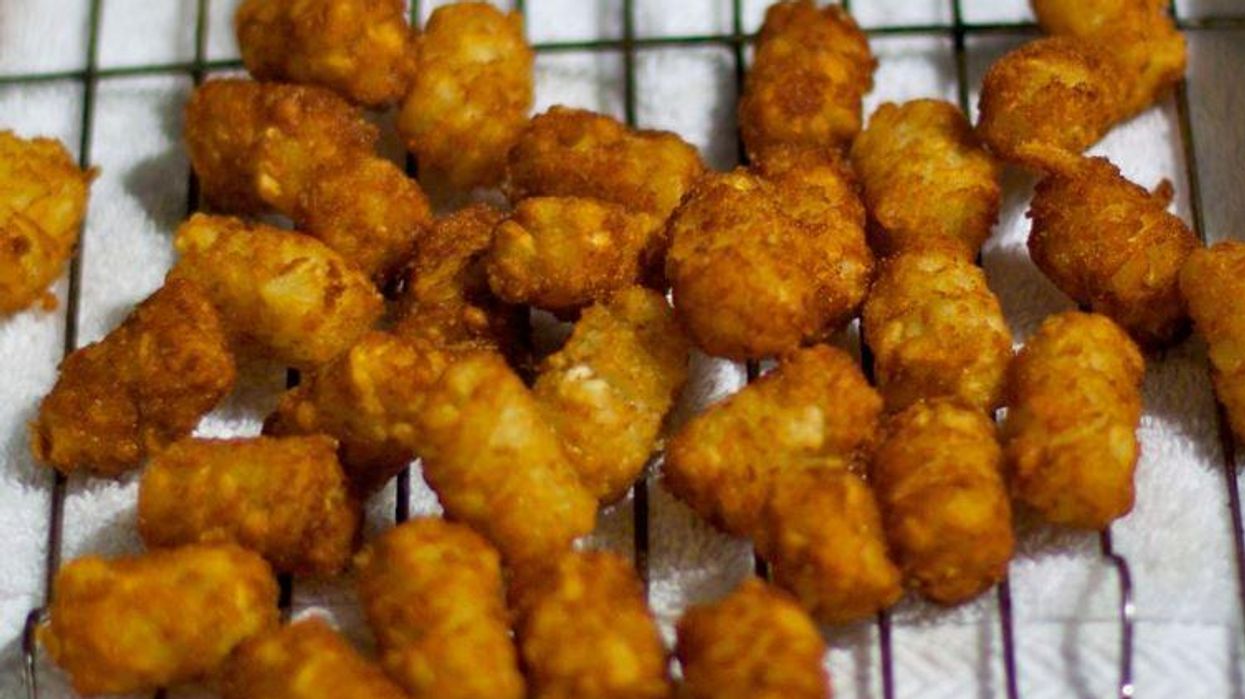
It’s hard to imagine growing up in America without Tater Tots. They are one of the most popular kiddie foods, right up there with chicken nuggets, peanut butter and jelly sandwiches and macaroni and cheese. The funny thing is the only reason Tater Tots exist is that their creators needed something to do with leftover food waste.
The Tater Tot is the brainchild of two Mormon brothers, F. Nephi and Golden Grigg, who started a factory on the Oregon-Idaho border that they appropriately named Ore-Ida. The brothers started the factory in 1951 after being convinced that frozen foods were the next big thing.
According to Eater, between 1945 and 1946, Americans bought 800 million pounds of frozen food.
The brothers soon became the country’s top producers of frozen corn, but their cash cow was frozen french fries. The problem with french fries was that separating the part of the potato used for the fry from the rest of the scraps took a lot of work. But that was fixed after a door-to-door salesman sold them on using a prune sorter.

Not wanting to waste all the leftover potatoes, the brothers fed the scraps to their cattle but had to stop when all the starch made the livestock too big. The brothers decided they could try to sell the potato scraps by pressing them into a new shape.
To make their new culinary creation, they chopped the potatoes into bits, extruded them into logs, blanched them and coated them in oil so they wouldn’t stick in the bag. The brothers held a contest among their employees and friends to create a name. The winning name, Tater Tots, was the idea of Clora Lay Orton, who took the slang name for potatoes and added an alliterative term referring to their size, and a staple of the American diet was born.

Tater Tots arrived in supermarkets in 1956, but they weren’t very popular initially because customers assumed they were worthless because of the low price. After Ore-Ida raised the price, the perceived value of the Tot rose and they were a hit. Initially, the brothers thought that people would fry Tater Tots in oil, but soon learned that they tasted just as good coming out of the oven.
Ore-Ida trademarked the name Tater Tots, so other companies sell them under another name, such as Tater Treats and Tater Puffs.
By 1964, Ore-Ida was making $31 million annually, but after complaints of nepotism within the company, the Grigg brothers sold it to Heinz for $30 million the following year.
These days, Tater Tots aren’t just for kids. They’ve become a popular dish in upscale restaurants, whether fancied up as Duck Poutine Tots at Sandpiper at Hard Rock Hotel & Casino Atlantic City, Tuna & Tots at Cabra in Los Angeles, or as Kaluga Caviar and Tots at Ernest in San Francisco.
The Tater Tot was once an afterthought but has grown to be a food staple in the U.S. If there’s a lesson in the story, it goes to show that what some people may see as meaningless waste, others may see as an opportunity.
